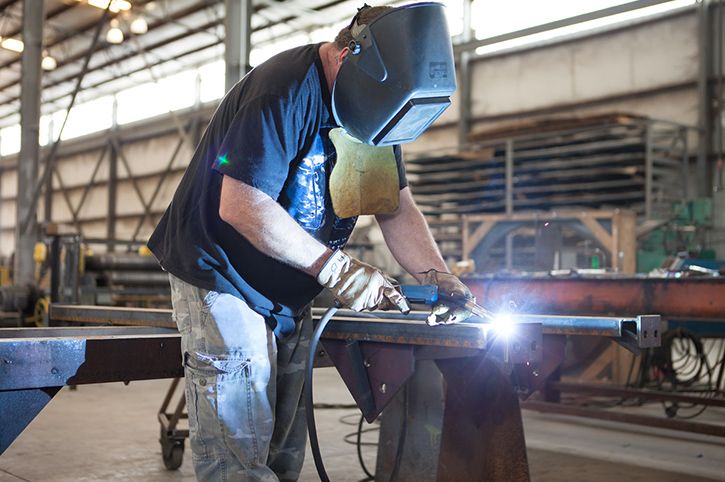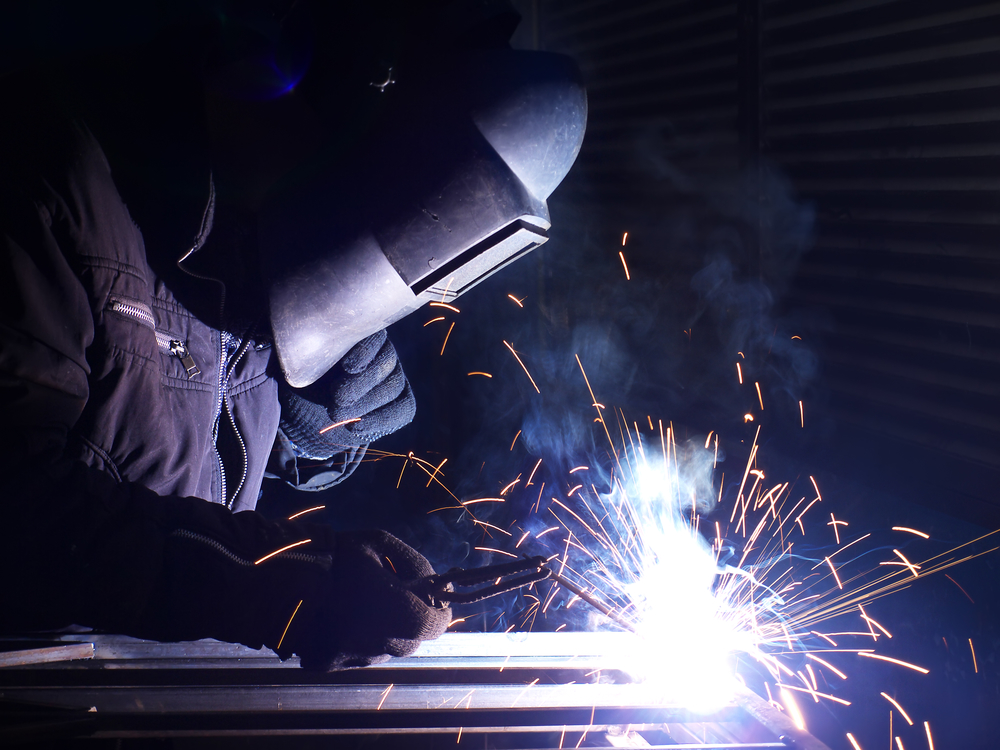Everything about Welding: Trick Insights Into Techniques and Best Practices for Success
Welding includes a selection of strategies, each matched for specific materials and applications. Understanding these techniques, such as GMAW, SMAW, and TIG, is vital for attaining perfect results. The ideal tools and safety and security methods can not be overlooked. As preparation and repairing play critical duties in the welding procedure, mastering these aspects can substantially improve the high quality of the final product. What are the essential elements that guarantee a successful weld?
Recognizing Various Welding Techniques
Welding strategies encompass a selection of techniques, each suited to details applications and products. Amongst one of the most common strategies are Gas Metal Arc Welding (GMAW), Secured Metal Arc Welding (SMAW), and Tungsten Inert Gas Welding (TIG) GMAW, additionally called MIG welding, is prominent for its speed and adaptability, making it suitable for thin products. SMAW, or stick welding, is favored for its simpleness and performance in outside atmospheres, especially with thicker metals. TIG welding offers accuracy and control, making it suitable for elaborate job and non-ferrous steels (Montana Mobile Welding and Repair Fabrication). Each method has its distinct benefits and factors to consider, allowing welders to select the very best method based upon the project's requirements, product kind, and preferred end results. Recognizing these strategies is necessary for effective welding
Crucial Welding Devices and Tools
While various welding methods call for details skills, the right tools and devices are equally necessary for attaining quality outcomes. Crucial welding tools consists of welding devices, which vary relying on the strategy-- such as MIG, TIG, or stick welding. Protective equipment, consisting of helmets, gloves, and aprons, warranties safety and comfort throughout the procedure. On top of that, clamps and components help secure materials in position, guaranteeing accuracy in welds. Consumables like welding poles, cable, and securing gas are likewise important elements that influence the quality of the weld. Tools such as mills and cutters facilitate surface preparation and post-weld finishing, adding to an expert outcome. Purchasing high-quality tools inevitably boosts the effectiveness and efficiency of welding projects.
Safety Practices in Welding
Correct safety and security techniques are essential in the welding sector to secure employees from prospective risks. Welders have to use appropriate individual protective tools (PPE), including helmets with appropriate shading, gloves, and flame-resistant clothing. Sufficient ventilation is crucial to decrease direct exposure to hazardous fumes and gases produced during the welding process. Furthermore, workers should be learnt the proper handling of welding tools to prevent mishaps. Fire safety procedures, such as keeping combustible products away from the welding location and having fire extinguishers readily offered, are essential. Routine inspections of tools and work areas can help determine prospective dangers before they lead to accidents. By adhering to these safety methods, welders can create a safer working environment and reduce threats related to their trade.
Readying Materials for Welding
Preparing materials for welding is an essential action that greatly affects the top quality and stability of the final product (Belgrade). Correct prep work entails cleaning the surface areas to get rid of contaminants such as dirt, oil, and corrosion, which can compromise the weld. Strategies such as grinding, fining sand, or making use of solvents are commonly employed to achieve a tidy surface. Furthermore, guaranteeing that the materials fit together well is essential; gaps can bring about weak welds. It's additionally crucial to take into consideration the positioning and positioning of the components, as this will certainly site affect the simplicity of welding and the final outcome. Lastly, choosing the proper filler product and guaranteeing compatibility with the base metals is important for achieving solid, resilient welds
Tips for Achieving High-Quality Welds
Accomplishing high-quality welds needs focus to detail and adherence to finest techniques throughout the welding process. Correct joint preparation is necessary, guaranteeing surface areas are cost-free and tidy from impurities. Picking the suitable filler product and welding technique based upon the base steels is essential for optimal bonding. Keeping consistent traveling speed and angle while welding can promote and avoid flaws harmony. Additionally, controlling heat input is important; extreme warm can bring about warping and deteriorated joints. If necessary, on a regular basis checking the welds throughout the procedure permits for instant changes. Utilizing proper post-weld treatments, such as cleansing and tension relief, can boost the toughness and honesty of the weld, eventually making certain an effective outcome.
Troubleshooting Usual Welding Issues
Welding commonly offers obstacles that can influence the quality and honesty of the end product. Usual concerns such as porosity, irregular weld grains, and overheating can arise, each requiring details fixing techniques. Comprehending these troubles is necessary for welders to boost their abilities and achieve suitable results.
Porosity Problems Clarified
Although porosity can commonly be ignored, it remains a crucial concern in welding that can jeopardize the honesty of a completed item. Porosity refers to the presence of little gas pockets within the weld grain, which can lead and weaken the joint to early failing. This problem normally arises from contaminants, wetness, or inappropriate shielding gas coverage during the welding procedure. To reduce porosity, welders should confirm that the base materials are clean and dry, make use of appropriate securing gases, and maintain regular welding criteria. On a regular basis examining the equipment and atmosphere can also assist determine prospective concerns prior to they show up in the weld. Attending to porosity efficiently is necessary for achieving solid, durable welds that fulfill top quality requirements.

Inconsistent Weld Beads
Inconsistent weld beads can considerably influence the quality and toughness of a finished item. Numerous factors add to this problem, consisting of improper travel rate, incorrect amperage setups, and irregular electrode angles. When the welder relocates too rapidly, a bead may show up narrow and do not have infiltration, while relocating also gradually can create excessive accumulation. In addition, utilizing the incorrect amperage can result in either undercutting or extreme spatter, both of which concession weld honesty. The welder's strategy, such as inconsistent torch motion, can additionally cause uneven grain appearance. To reduce these troubles, welders must concentrate on maintaining steady, controlled motions and making certain proper tools settings to accomplish uniformity in their welds. Consistency is essential to achieving strong and trustworthy welds.
Getting Too Hot and Warping Issues
Extreme warm during the welding process can result in considerable getting too hot and warping problems, impacting the structural stability of the work surface. These problems typically materialize as distortion, which can compromise placement and fit-up, making more setting up testing. Aspects adding to overheating include the option of welding criteria, such as voltage and take a trip rate, as well as the sort of product being bonded. To alleviate these issues, welders need to preserve consistent traveling speed and suitable heat input while monitoring the work surface temperature level. In addition, preheating or post-weld warm therapy can aid alleviate anxieties triggered by quick air conditioning - Montana Mobile Welding and Repair click to find out more Belgrade. Normal examination and adherence to ideal practices are essential in preventing overheating and guaranteeing the longevity and reliability of welded structures
Regularly Asked Concerns
What Are the Profession Opportunities in the Welding Sector?
The welding industry offers varied career chances, including settings as welders, assessors, designers, and teachers. Professionals can operate in production, building, aerospace, and automotive markets, taking advantage of solid demand and affordable wages in various roles.
Just How Can I Improve My Welding Rate Without Giving Up Quality?
To enhance welding rate without sacrificing top quality, one must practice reliable methods, keep tools, enhance settings, and improve hand-eye sychronisation. Regular training and seeking comments can also greatly contribute to achieving much faster, high-quality welds.
What Qualifications Are Offered for Welders?
Numerous accreditations exist for welders, including those from the American Welding Society (AWS), the National Center for Construction Education and Research (NCCER), and numerous industry-specific organizations. These credentials enhance employability and show ability proficiency.
How Does Welding Impact the Residences of Metals?
Welding influences the properties of steels by changing their microstructure, which can cause click here to find out more changes in ductility, solidity, and stamina. Warm input and air conditioning prices during the procedure considerably impact these product characteristics.
Can I Bonded Dissimilar Metals Together?

Comments on “Montana Mobile Welding and Repair Welding shares insight on addressing heat distortion effectively”